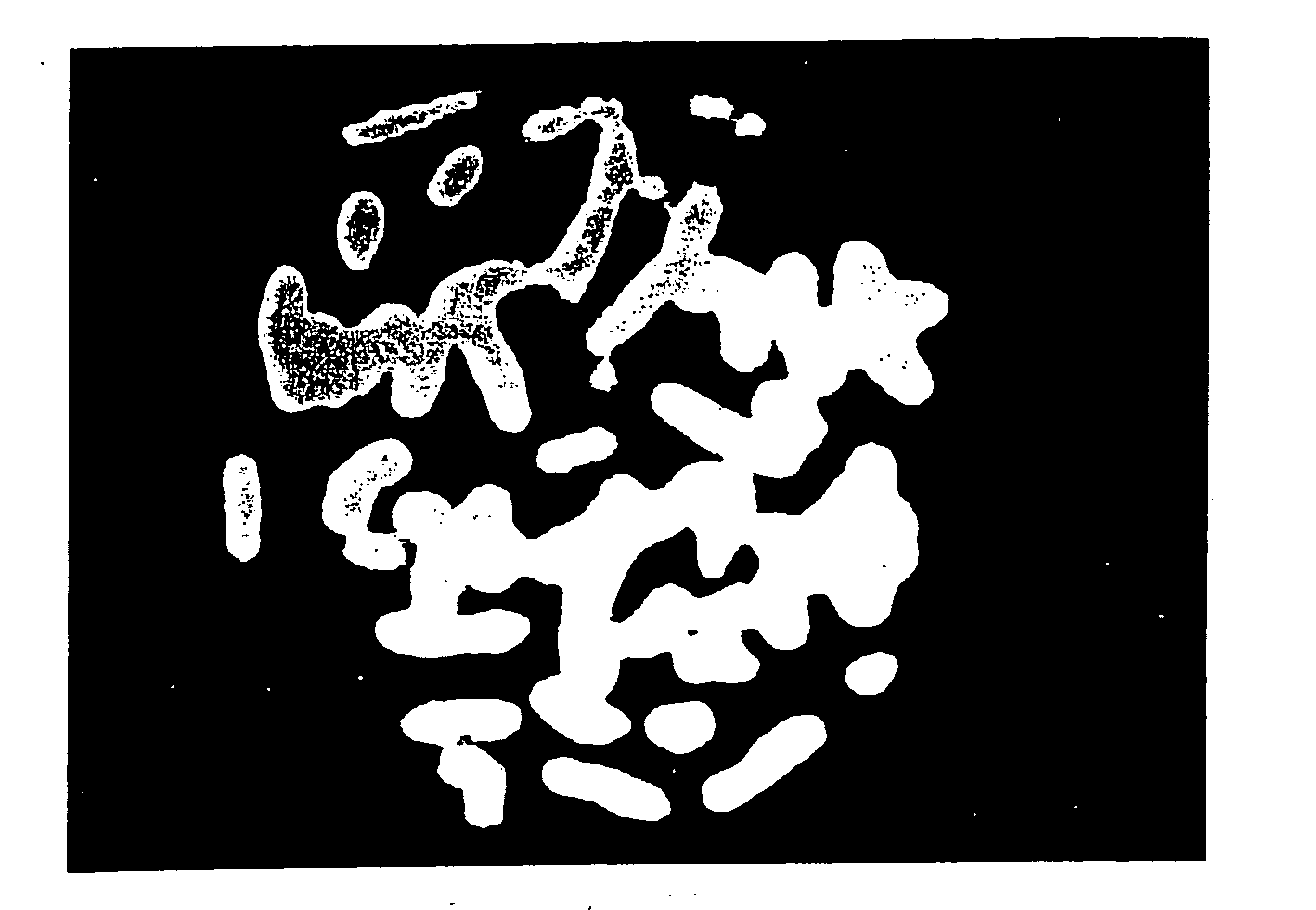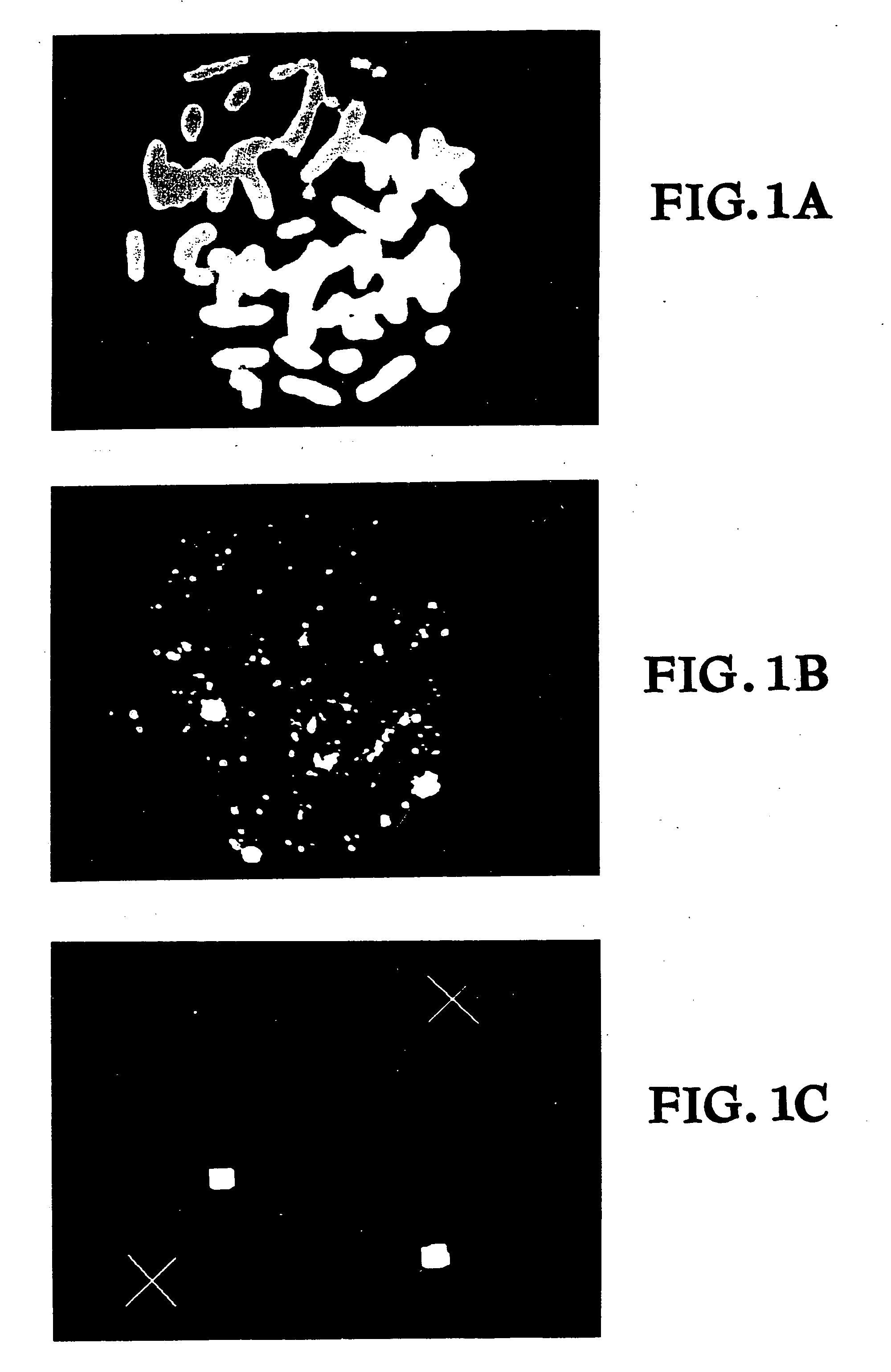Methods and compositions for chromosome-specific staining
a technology of chromosomes and compositions, applied in the field of cytogenetics, can solve the problem of inability to achieve perfect uniformity of staining, and achieve the effect of rapid and highly sensitive detection of chromosomal abnormalities
- Summary
- Abstract
- Description
- Claims
- Application Information
AI Technical Summary
Benefits of technology
Problems solved by technology
Method used
Image
Examples
Embodiment Construction
[0027] The present invention includes compositions for staining individual chromosome types and methods for making and using the compositions. The compositions comprise heterogeneous mixtures of labeled nucleic acid fragments. The individual labeled nucleic acid fragments making up the heterogeneous mixture are essentially standard hybridization probes. That is, each chromosome-specific staining composition of the invention can be viewed as a large collection of hybridization probes to unique sequence regions of a specific chromosome. In fact, the preferred method of making the compositions of the invention entails generating a heterogeneous mixture on a fragment-by-fragment basis by isolating, cloning chromosomal DNA, and selecting from the clones hybridization probes to unique sequence regions of a particular chromosome. The precise number of distinct labeled nucleic acid fragments, or probes, comprising a heterogeneous mixture is not a critical feature of the invention. However, ...
PUM
| Property | Measurement | Unit |
|---|---|---|
| pH | aaaaa | aaaaa |
| pH | aaaaa | aaaaa |
| temperature | aaaaa | aaaaa |
Abstract
Description
Claims
Application Information
 Login to View More
Login to View More - R&D
- Intellectual Property
- Life Sciences
- Materials
- Tech Scout
- Unparalleled Data Quality
- Higher Quality Content
- 60% Fewer Hallucinations
Browse by: Latest US Patents, China's latest patents, Technical Efficacy Thesaurus, Application Domain, Technology Topic, Popular Technical Reports.
© 2025 PatSnap. All rights reserved.Legal|Privacy policy|Modern Slavery Act Transparency Statement|Sitemap|About US| Contact US: help@patsnap.com


